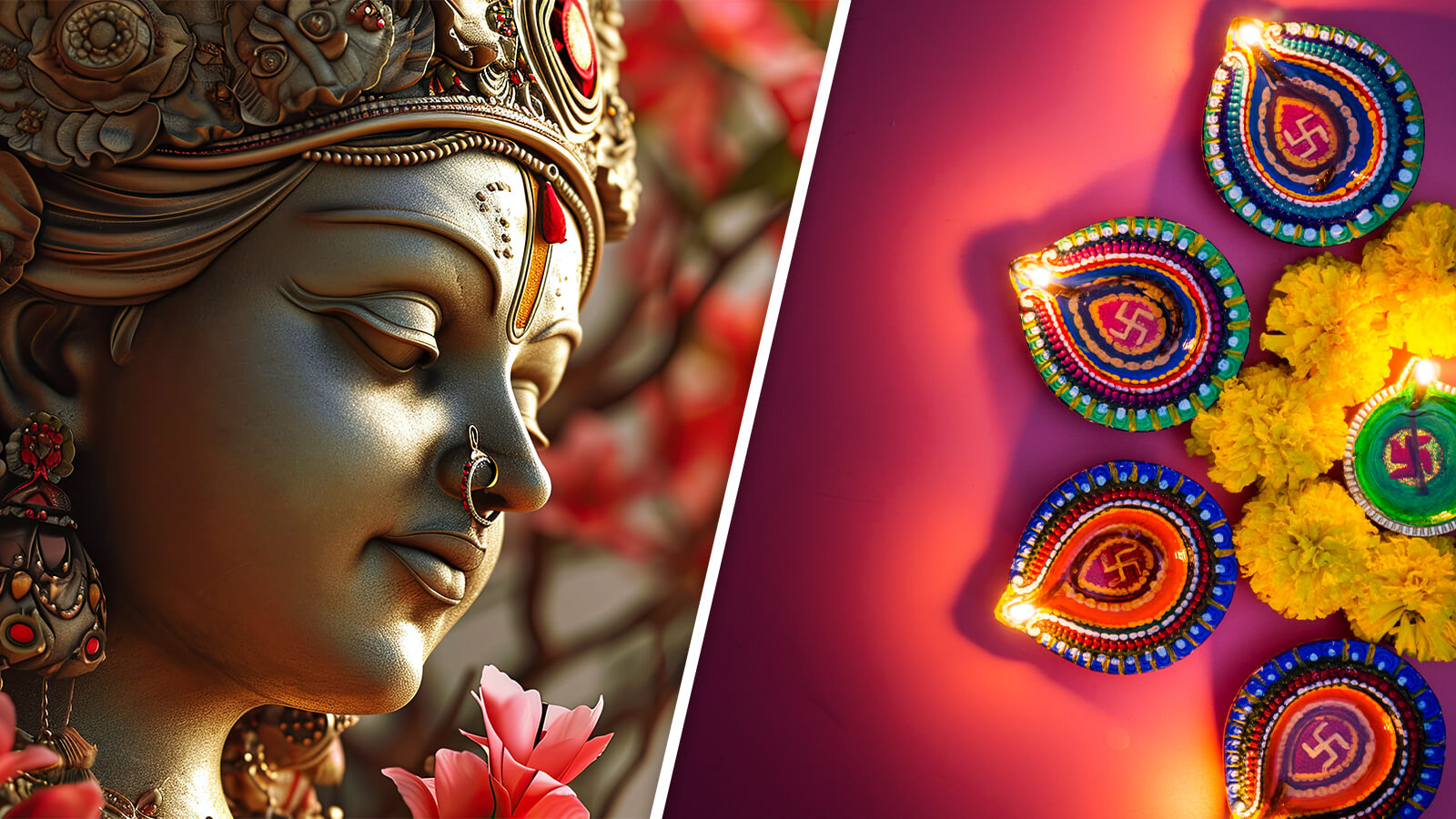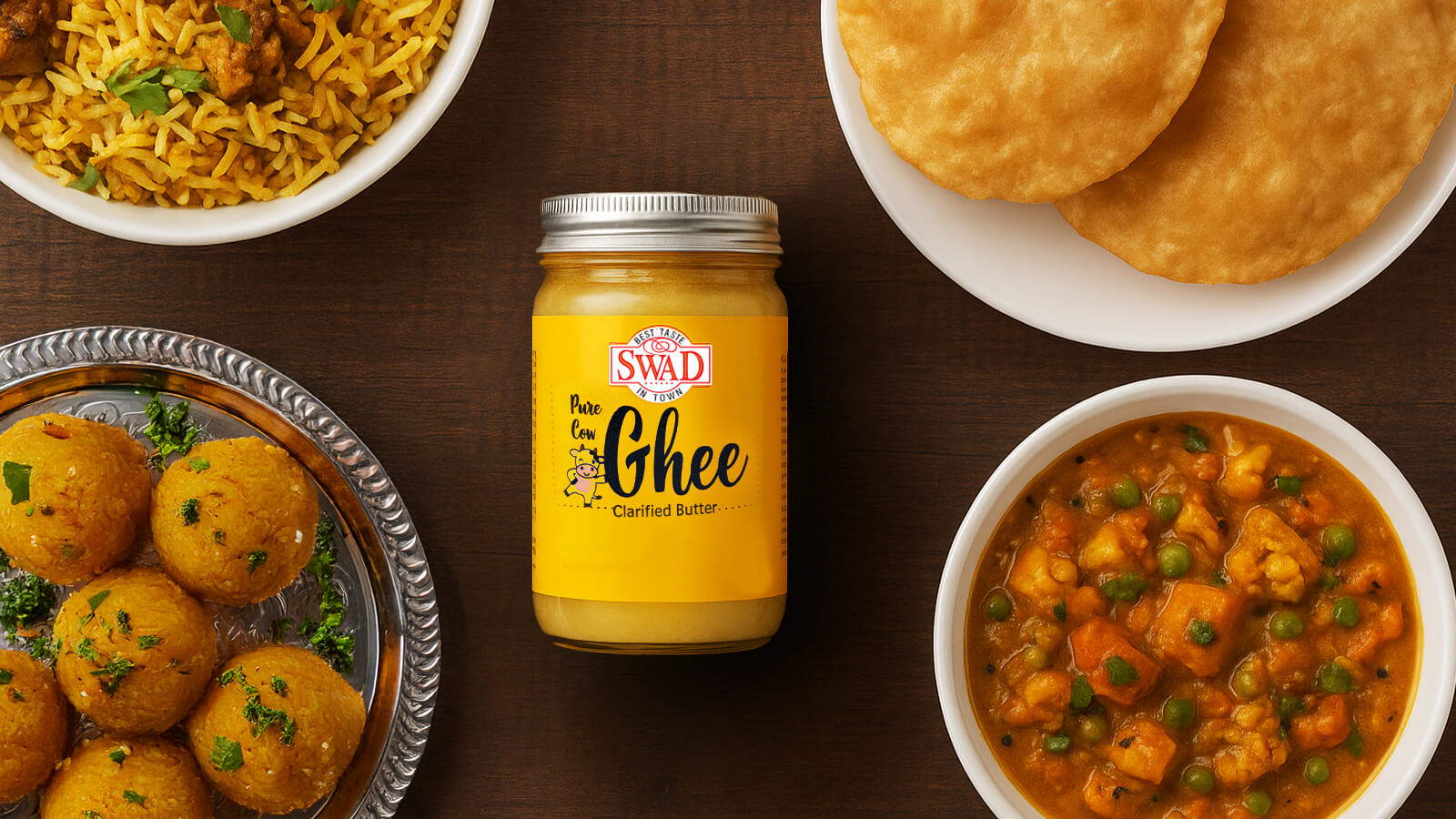The Royal Dish of India: Exploring the World of Biryani
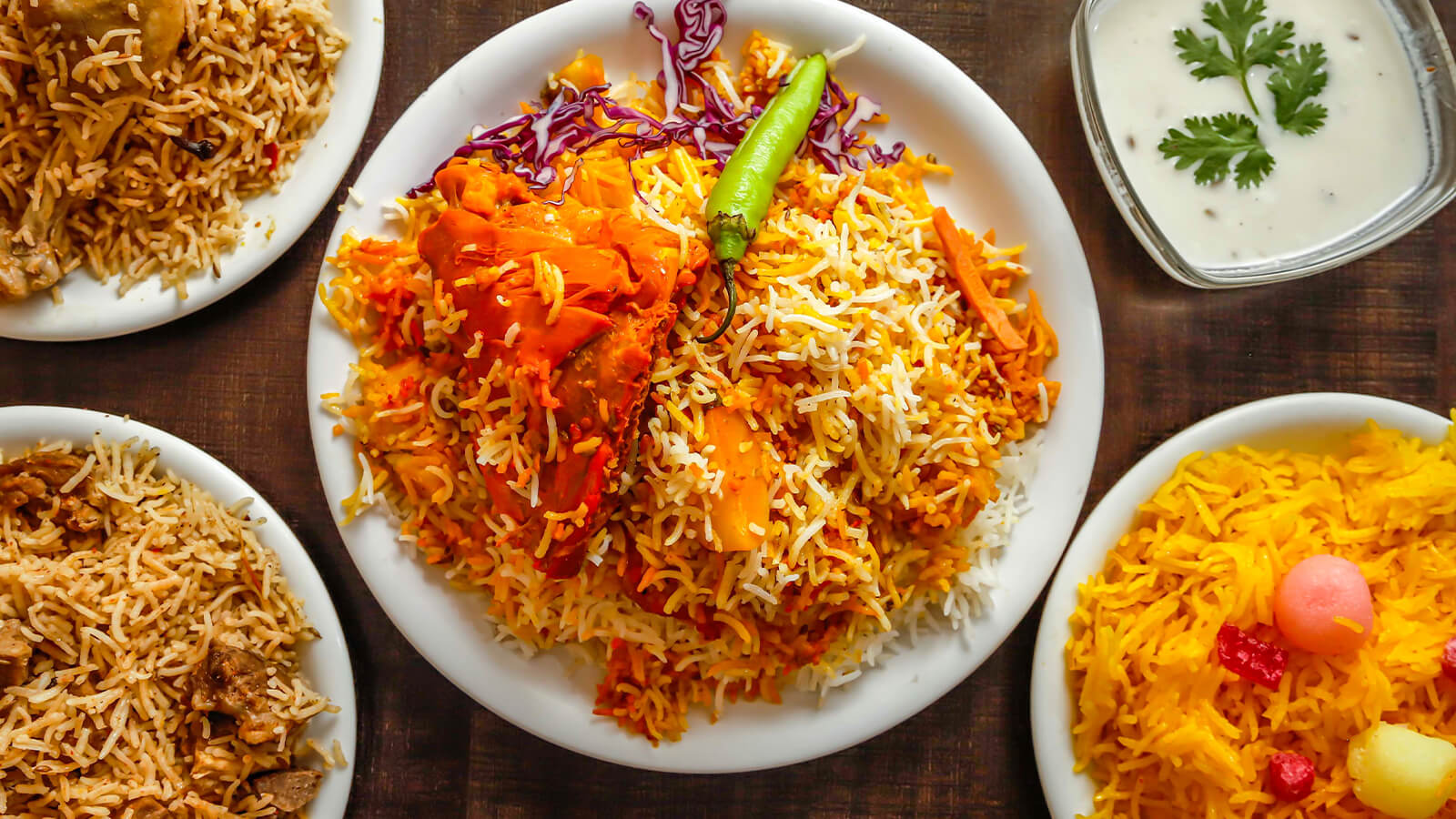
Every cuisine has that one dish everyone claims their family makes best — a dish that carries stories, traditions, and a little friendly rivalry. In Indian cuisine, that dish is biryani.
From royal kitchens to family feasts, biryani has traveled through centuries, gathering flavors, spices, and styles along the way. With every region adding its own twist and unique ingredients, one thing’s for sure — not all biryanis are created equal.
Biryani is derived from the Persian word Birian, which translates to ‘fried before cooking’ and Birinj, the Persian word for rice. Legend has it that it was brought over to India by Persian travelers and Mughal emperors centuries ago. Over the centuries, the process of making this popular dish has been heavily influenced by the Mughals.
Biryani is more than just a meal—it’s a fragrant, layered masterpiece that brings together rice, tender pieces of different types of meat or hearty vegetables, and a medley of rich spices.
While the ingredients may vary by region, most biryanis include onions, tomatoes, fresh herbs like mint and cilantro, and a mix of key spices such as turmeric, red chili powder, coriander powder, cumin, garam masala, cardamom, cloves, and bay leaves.
Biryani is traditionally prepared in two main ways. The first is the pakki (cooked) biryani, where the meat or vegetable gravy and rice are cooked separately before being layered and given a short dum (slow steam). Pakki biryani is easier and quicker to prepare.
The second method is kachi (raw) biryani, in which layers of raw marinated meat are combined with partially cooked rice and then slow-cooked using the classic dum pukht technique for about an hour, until the meat becomes tender and flavorful. The kachi method is more time-intensive.
Let’s go over some of the most popular types of biryani:
1. Hyderabadi Biryani
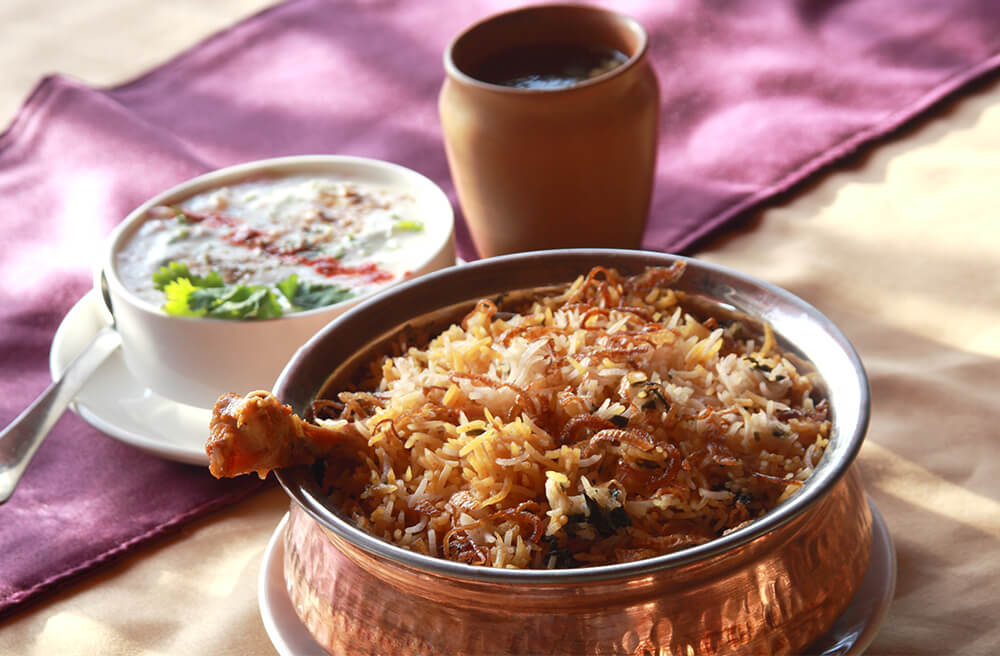
Having its origins in the royal kitchens of the Nizams of Hyderabad, Hyderabadi Biryani is one of India's most iconic and indulgent dishes. The preparation begins with marinating the meat in a flavorful mix of ginger-garlic paste, yogurt, tomatoes, fried onions, and aromatic spices such as chili powder, turmeric, garam masala, cardamom, cinnamon, cloves, and cumin. This marinated meat is then left to rest for several hours or overnight.
Next, the marinated meat is layered with partially cooked basmati rice, fried onions, fresh mint, cilantro, saffron-infused milk, and green chilies. The pot is sealed and slow-cooked (dum style) until the meat becomes tender and the rice absorbs all the rich, fragrant flavors. The result is a beautifully layered, aromatic biryani that’s truly worth the effort. Hyderabadi is commonly served with mirchi ka salan, a creamy and tangy curry.
2. Lucknowi (Awadhi) Biryani
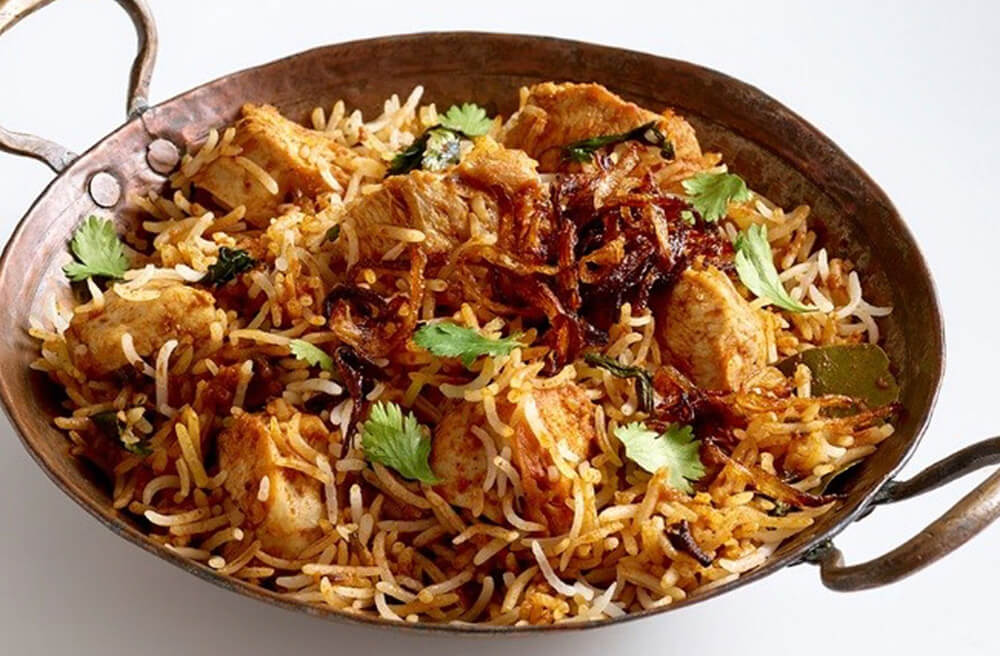
Lucknowi Biryani, also known as Awadhi Biryani, originates from the royal kitchens of the Nawabs of Awadh. It is prepared using the pakki biryani method. This biryani features a rich use of whole spices such as cinnamon, green and black cardamom, caraway seeds, and cloves, similar to the spices infused into a yakhni (broth).
Famous for its delicate seasoning and perfectly balanced flavor, Lucknowi Biryani is milder and less spicy compared to Hyderabadi Biryani.
3. Bombay Biryani
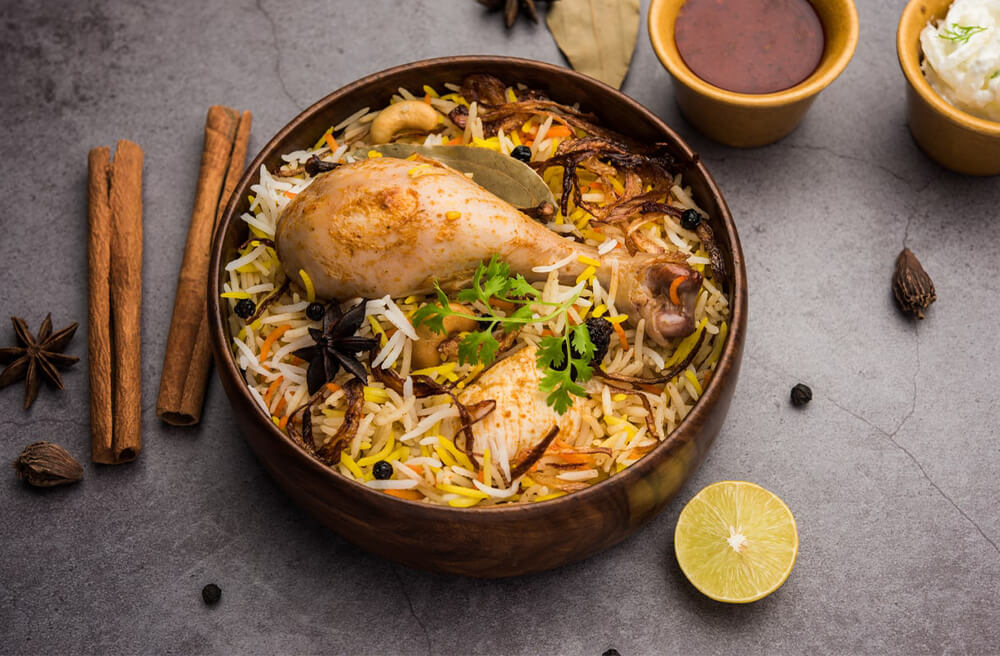
Coming from Bombay (Mumbai), India, Bombay Biryani is known for its distinct blend of sweet, spicy, and tangy flavors. Prepared using the pakki biryani method, it features unique ingredients such as dried plums, fried potatoes, and a hint of rose water.
Bombay Biryani can be made in both vegetarian and non-vegetarian versions and is enjoyed everywhere—from bustling street food corners to fine-dining restaurants.
4. Sindhi Biryani
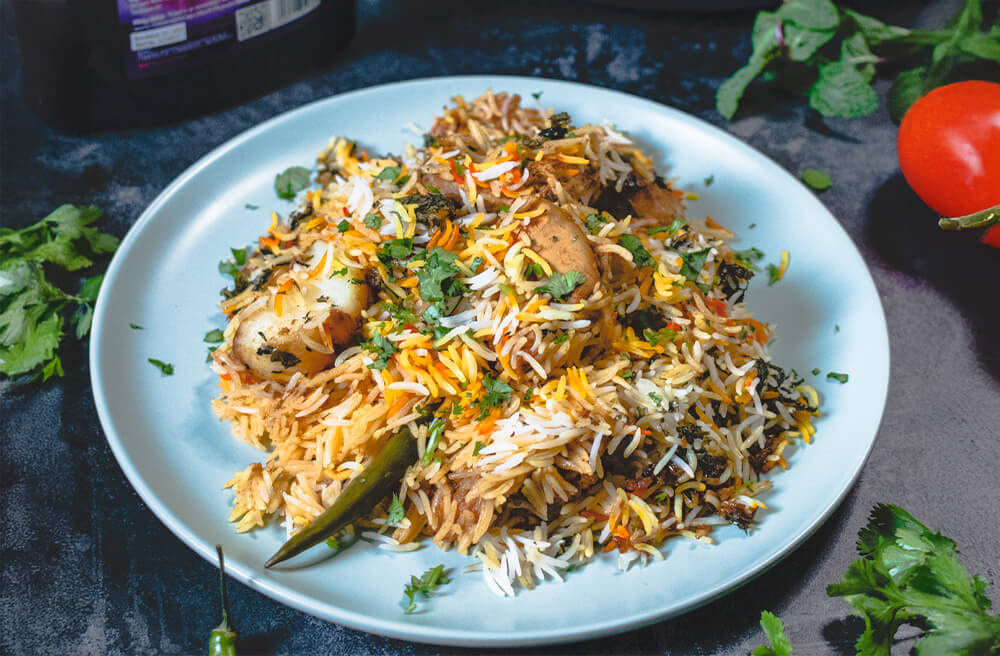
Developed in the regions of Sindh, Pakistan, Sindhi Biryani shares a similar preparation style to Bombay Biryani and is a beloved dish across Pakistan. The flavorful gravy, typically made with mutton or chicken, combines tangy yogurt, fresh tomatoes, mint, and green chilies for a rich and aromatic base.
Distinguished for its spicy and bold flavor profile, Sindhi Biryani stands out for its vibrant taste, perfectly balancing heat, tanginess, and the aroma of fresh herbs.
5. Malabar Biryani

Malabar Biryani, also known as Thalassery Biryani, is a signature dish from the Malabar region of Kerala, India. What sets it apart from other biryanis is its use of short-grained Jeerakasala or Kaima rice. This biryani is prepared using the pakki biryani method. Malabar Biryani is often made with chicken, mutton, or fresh coastal seafood such as fish or prawns.
This biryani is prepared with ghee and has cashews, raisins, and aromatic herbs like mint and cilantro, giving it a rich aroma and a perfectly balanced, mildly spiced flavor.
6. Kolkata Biryani
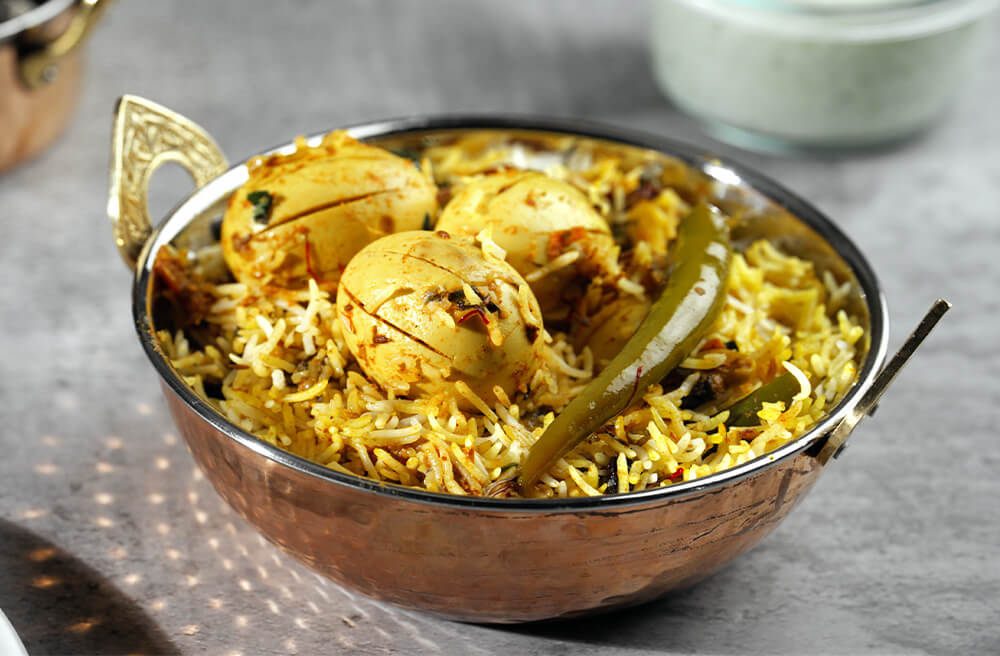
Kolkata Biryani originated in the city of Kolkata, West Bengal, India. Inspired by the Lucknowi style of biryani, it is prepared using the pakki biryani method and is known for its milder, more delicate flavor compared to Hyderabadi Biryani.
What makes this biryani unique is the addition of tender potatoes and boiled eggs, which have become its signature elements.
7. Dindigul Biryani

Dindigul Biryani originates from the Dindigul district in Tamil Nadu, India. It features a flavorful blend of curd (yogurt), lemon juice, freshly ground spices, and short-grained seeraga samba rice. This biryani offers a perfect balance of tangy and spicy.
Dindigul biryani is accompanied by dalcha, a lentil-based curry made with tamarind and various spices.
Biryani is accompanied by condiments such as mint chutney raita, cucumber raita, boondi raita, or pickles (achar). Biryani remains a showstopper on its own — a dish with a heavy flavor profile. Biiryani represents a journey across India’s diverse culinary landscape, blending history, tradition, and regional culture.
As a centerpiece of every celebration, biryani is always present during weddings, birthdays, family gatherings, and religious festivities. Biryani is truly cherished everywhere; it stands as a symbol of festivity and comfort. It’s a timeless dish that transcends borders and brings people together through the shared joy of food.







